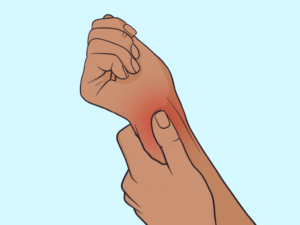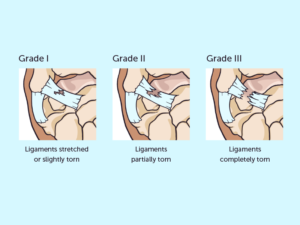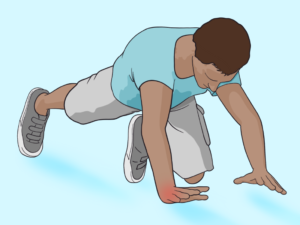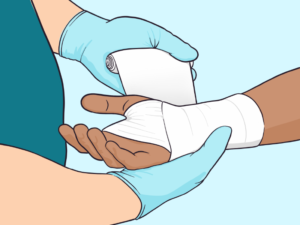How to Recover from a Sprained Wrist
If you’ve suffered from an injury before, chances are you’ve hurt your wrist in some capacity. Whether you’re an athlete or not, sprained wrists are one of the most common injuries for people to experience as we naturally tend to stick our arms out to break a fall.
A wrist sprain occurs when there is a strong force of impact to your arms, wrist, and hands, causing ligaments that connect the hand and wrist to stretch beyond its normal range of motion.


How to Know if You’ve Sprained Your Wrist
If you have been hit or exerted extreme pressure on your wrist, and aren’t sure if your wrist has been sprained or not, you’ll want to check for specific symptoms. The symptoms of a sprained wrist include the following:
- Pain
- Swelling
- Loss of motion
- Weakness
- Tenderness and warmth around the injured location
- Feeling a popping or tearing in the wrist
- Bruising
The unique thing about wrist sprains is that they are divided into three different levels. The grades are all considered sprains, but with varying degrees of ligament damage. Read below for further information.
- Grade I: Pain with minor damage to the ligament (microscopic tears)
- Grade II: Pain, more severe ligament damage, a feeling of looseness to the joint, and some loss of function
- Grade III: Pain, a completely torn ligament, severe looseness of the joint, and loss of function


Most Common Ways to Sprain Your Wrist
You don’t have to be an athlete or doing a strenuous activity to sprain your wrist. Wrist sprains come from sports, exercises, and everyday common missteps that cause you to fall and injure yourself. While everyday occurrences that lead to a sprained wrist are rare, it’s important to take precautions, especially in harsh weather conditions like snow and ice as an injury is more likely to occur.


Since sprains are more common in those that are involved in sports, here are some of the most common sports for wrist sprains, as they require frequent use of your arms and hands to participate:
- Basketball
- Baseball
- Gymnastics
- Diving
- Skiing
- Skating (ice, skateboarding, etc.)
Treatment and Recovery for a Sprained Wrist
The timeline for a wrist sprain and the healing process vastly depends on the level of damage and pain you’re experiencing. Less severe sprains can take as little as 2 weeks to heal while severe sprains can take up to 10 weeks.


In order to start the healing and recovery process from a sprained wrist, it’s important to take it easy and refrain from lots of movement in the arm with the injury. If you’re suffering from a mild to moderate wrist sprain, you will most likely be able to recover from the comfort of your own home without seeing a doctor, here’s how:
- Prop up and rest your injured wrist for at least 48 hours – not picking up anything using that arm or applying pressure to that area. Keep wrist elevated above your heart.
- Ice your wrist to reduce pain and swelling. Ice for 10-30 minutes every 1 to 2 hours for a couple of days, or until the pain is gone.
- After swelling has gone down, go back and forth between applying a heating pad and ice pack to keep your wrist flexible.
- Compress your wrist using a bandage or splint to keep your wrist immobile and keep it on for another 1-2 days. The bandage should not be tight enough to wear it causes pain or numbness.
- Take anti-inflammatory painkillers to reduce pain, inflammation, and swelling. Recommended medications include Advil, Aleve, or Motrin. Please consult with your doctor before taking any medications.
- Practice stretching and strengthening exercises based on doctor or physical therapist recommendations.
As always, please consult with your doctor before starting any medications or doing any treatments. In many cases, wrist sprains can be healed from home, but it’s a good idea to follow guidance from a healthcare professional where appropriate.
You will know that your wrist sprained has healed when you feel no pain in your wrist at rest, you’re able to grip objects without any issues, and your injured wrist feels as strong as your injured wrist. Returning to your prior activity level using your wrist before it’s healed might lead to more permanent damage down the line.
How to Prevent a Future Wrist Sprain
The short answer to this is that just like any injury, there is no way to prevent a wrist sprain of any kind in the future. The best advice for preventing a sprained wrist in the future would be to wear wrist guards or tape during physical activity to prevent bending it beyond its range of motion.
